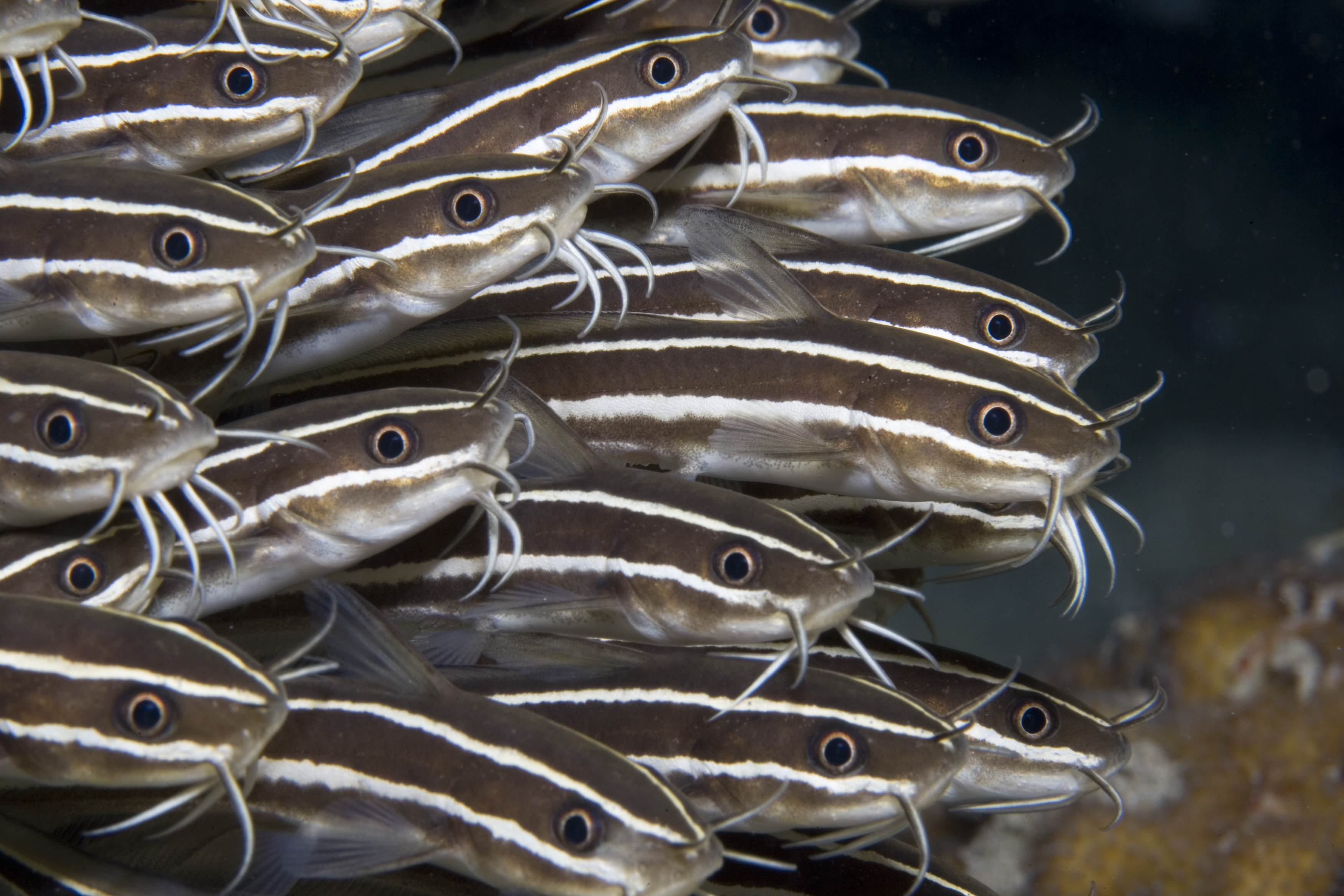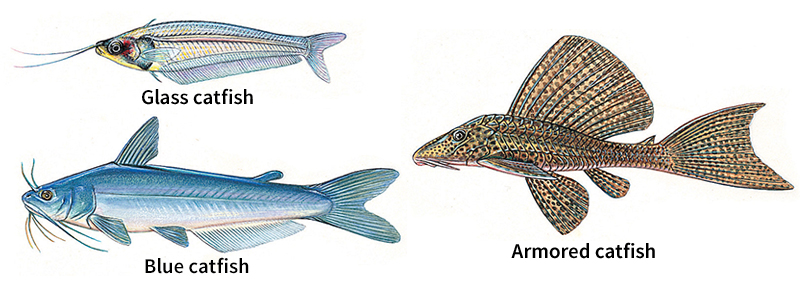Catfish is a large group of fish that have two to four pairs of fleshy whiskerlike growths near the mouth. These growths, called barbels, resemble the whiskers of a cat. Catfish also differ from most other fish in that they do not have scales. Many kinds of catfish have sharp spines on their backs and near their gills. These spines give off a venom (poison) when they enter the body of another animal and can cause serious wounds. They are probably used mainly as a defense against predators (hunting animals).

There are hundreds of species (kinds) of catfish. Most live in fresh water and some inhabit the oceans. Most freshwater species live in lakes, ponds, or slow-moving parts of streams. But the channel catfish and a few other species live in swift-flowing waters. Catfish feed on a variety of living things, including frogs and insects. Larger catfish may also eat other fish.
Catfish vary in size. The largest species, the Mekong giant catfish, may grow up to 10 feet (3 meters) long and may weigh as much as 650 pounds (295 kilograms). The tiny glass catfish grows only 4 inches (10 centimeters) long. Many people keep it in home aquariums.
Some kinds of catfish have unusual features or habits. The upside-down catfish swims upside down. The electric catfish can send out a strong electric shock. The eelcat is long and slim and resembles an eel. The candiru swims into the gills of larger fish, rips the gills with its sharp spines, and drinks the victim’s blood. Among some species of ocean catfish, the male carries the eggs in his mouth. The male does not eat until they hatch. 
The walking catfish of tropical Asia can move overland from one body of water to another. It pushes itself along the ground with its tail, using its strong pectoral fins (fins behind the gill openings) to lift the front of its body. This catfish has gills, but it also has additional air-breathing organs. Walking catfish often come out on shore at night to feed. In the 1960’s, walking catfish were introduced into southern Florida, where they have established large populations in some rivers. They may eventually replace some of the native fishes in these waters.
Dozens of species of catfish are native to North America. They include flathead catfish, channel catfish, bullheads, and madtoms. Flatheads and channel catfish may weigh over 70 pounds (32 kilograms). Most bullheads and madtoms weigh less than 1 pound (0.45 kilogram).
Catfish are raised commercially on fish farms for use as food. Fish farms in the United States produce more than 300 million pounds (140 million kilograms) of catfish—mainly channel catfish—annually. Most of these fish farms are in Alabama, Arkansas, and Mississippi.
